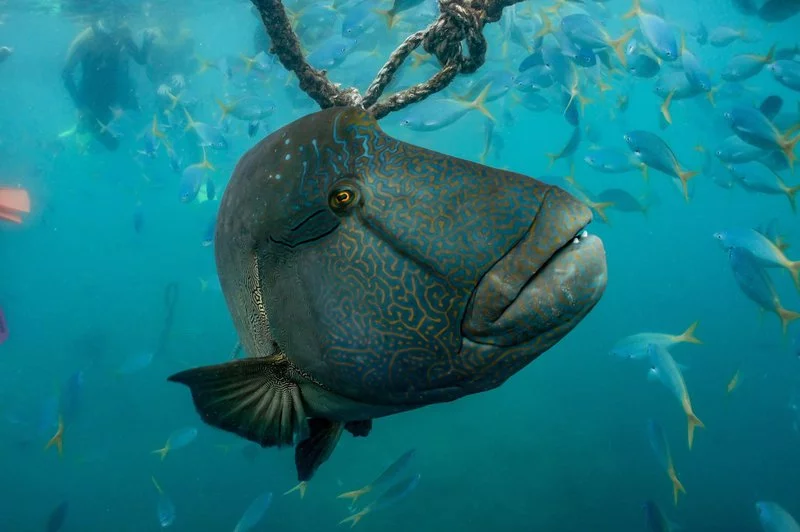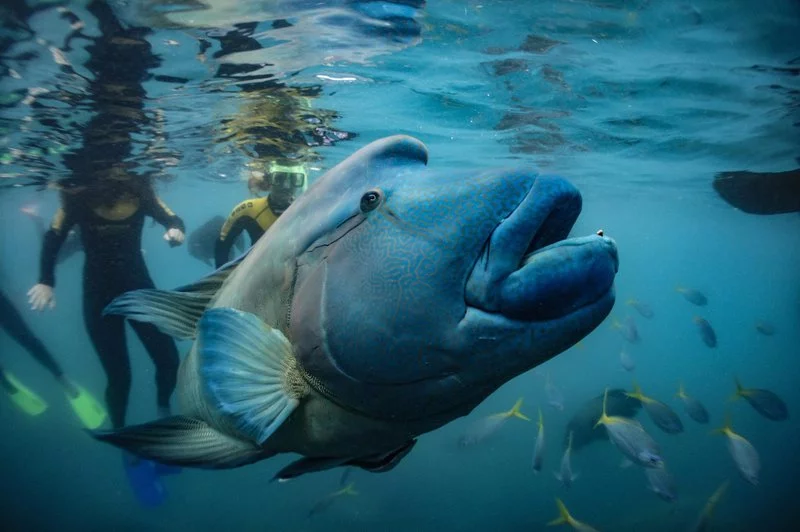The Great Barrier Reef marine park is home to 1625 different species of fish that come in all manner of shapes, colours and sizes. 1400 of these species live on the coral reefs and one of the largest of these species is the hump head Maori wrasse, also known as the Napoleon wrasse. The wrasse family, labridae, is one of the largest in the fish world with over 600 species, most of which are beautifully, brightly coloured. The humphead Maori wrasse is no exception and is the largest extant member of this family. These are quite curious, inquisitive and friendly fish and as a result have become attractions and resident characters at many popular dive and snorkel sites around the world. They also have a high level of intelligence and have been known to form bonds with divers that they see and interact with regularly.
This large species can be found in tropical waters across the Indo-West and Central Pacific oceans including east Africa, Asia, New Caledonia and Australia. Here in Australia they can be found on the offshore reefs of the northern parts of Western Australia and on the east coast we are lucky enough to be able to find these giants across the whole length of the Great barrier Reef in Queensland, where they inhabit shallow inshore waters and coral reefs and also on outer reef shelves at depths of up to 100 meters.
Bright colours is a characteristic of most fish in the wrasse family and adult male Maori wrasse dazzle with beautiful blues and greens worked through with intricate, geometric patterns that are reminiscent of traditional Maori tattoos, which is where their name comes from. Females of this species also exhibit these stunning patterns although their colouring is much more subdued and have more of a greyish tone, sometimes with a russet colour on the dorsal (top) side. The males are also much larger and can reach lengths of over 2 meters and weigh up to 180 kilograms. An interesting thing about humphead Maori wrasse is that they all begin their lives as females and then have the ability to transition to male as they mature. The transition from female to male is where the humphead part of their name comes into play. As the females begin. To change their forehead will start to become more humped and this hump will become more prominent as the new male fish matures. These guys can live for up to 30 years in the wild however they don't reach sexual maturity until they are about 7 years old and have a quite low reproductive rate.





